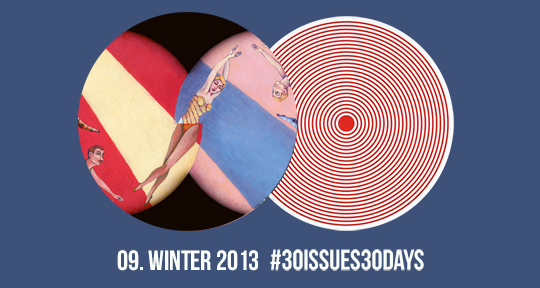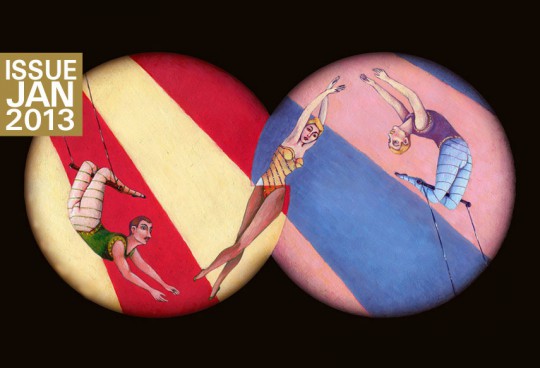We are not told officially; the longlist simply lands on 3:am’s website without fanfare. I stumble upon it two or three days after the fact. Disbelieving at first, I click on the hyperlink. Only when Asymptote’s familiar landing page flashes on my screen do I accept what has happened: Within two years of the magazine being launched, we have been nominated for Magazine of the Year! Just as miraculously, Jacob Severn (one of two amazing Jacobs interning for us that quarter; the other being Jacob Silkstone, who provides the inspired introduction below as Assistant Managing Editor) tells me his wife overheard someone next to her on the New York subway recommending the journal over the phone. Of the eight events ambitiously planned within three weeks of our second anniversary, I’m directly involved in two of them (find photos of all 34 events we have ever organized here). The Beijing one doesn’t go too smoothly (not only does photographic documentation fall through, I experience an embarrassing moment of brainfreeze during the event; I had planned to prepare for the panel after launching the issue and rushing to the airport for my flight to Beijing, but cold medicine knocked me out for most of the overnight flight and for most of the day leading up to the event itself, so I showed up to my first-ever Asymptote panel on an empty stomach, in the midst of a freezing Beijing winter). But that is irrelevant. I still wouldn’t have given up meeting readers in the flesh for anything. As, one by one, actual readers come up to talk to me after the panel, it feels I’m meeting whom all the hard work has been for.
Asymptote is the journal that never sleeps. Pick any hour of any day and you can be reasonably certain that, somewhere in the world, someone is working on an Asymptote article, someone else is editing a submission, and still another person is writing a review of a newly translated book. (In its early years, you could be reasonably certain that one of the three was our editor-in-chief, tirelessly working to shape “the premier site for world literature in translation.”) The story of how the journal’s ninth issue came together is—at least from my perspective, the perspective of a 23-year-old intern—one of sleepless nights, dozens of emails back and forth, and marathon sessions in front of an increasingly blurry laptop screen.
Midway through 2012, I returned from half a year working at an international school in Dhaka after graduating from an MA programme. If you’ll allow me a couple of slightly over-indulgent metaphors, I’d imagined university life as a straight path leading into a mist-obscured wood, or a bright circle of fire around a thick knot of darkness. I’d reached the end of the path and the fire burned a little colder than before. To borrow Chuya Nakahara’s lines from “Goat Songs”:
I didn’t awaken with a sense of purpose anymore.
I awoke and a sad, everyday scene
I’d bitterly dreamed of …
(I could neither settle in
nor escape that place)
Not sure which direction to take next, I reached out to Asymptote for an internship.
By the end of my first week with the journal, I’d helped pick through Amélie Nothomb’s Life Form to produce a list of potential excerpts, and I’d been assigned to help edit Daoud Najm’s interview with Edmund White. In the first of her Jane Somers books, Doris Lessing describes a talented editor as “having a mind like a pair of scissors”; the first Asymptote editor I worked with had a mind like a sculpting chisel. My initial edits—meticulously correct but uninspired—were deftly reshaped in a way that was precise without ever seeming overbearing, ruthless without ever being unnecessarily brutal. Writing and editing are both methods of chipping away at the stone to find the sculpture within, and one of the great pleasures of working with Asymptote’s ninth issue was watching each piece emerge to take its final form.
Of course, some submissions came to us already fully-formed. I remember Gerard Macé’s ‘The Museum of Shadows’, in Timothy Mathews’ English translation, demanding to be read and reread. Even after multiple journeys through the text, there wasn’t a single word I’d have wanted to change. ‘The Museum of Shadows’ transports its readers to Prague, “Kafka’s city… with its outsize castle and its dark narrow streets, its passion for magic lanterns.” Macé’s work occupies a “dark narrow” space of its own—the fine margin between fiction and essay—as it recreates in painstaking detail an imaginary museum devoted to shadows and silence. It also functions as a miniature history of shadows, from Plato’s allegory of the cave to the disturbing final image of “people’s silhouettes scored on a wall, and sunless shadows” after the bombing of Nagasaki, “mute images [with] so much to say, and so much more to say, about the reality of the twentieth century.” It remains, even after thirty issues, one of my favourite Asymptote pieces.
Whether deliberately or not, the ninth issue deployed chiaroscuro to great effect. Macé’s shadows are intertwined with illustrations from Michela Caputo that are so beautifully weightless they seemed (why use the past tense? They can, and should, be revisited now…) to lift from the page. One image in particular stayed with me: a sketch accompanying Toh EnJoe’s ‘Harlequin’s Butterfly’ (a title surely greeted with approval by the ghost of Nabokov). Escaping a net controlled by two disembodied hands, half a dozen butterflies appear to have floated earthwards. Two move out of the rust-coloured background light to settle on the dark hair of a man staring vacantly towards the margins of the image and the white space beyond. The whole picture evokes a kind of quiet reversal of the laws of physics—a quotidian miracle, and a perfect match for the elegantly controlled complexity of Toh EnJoe’s work. A perfect match, too, for the ninth issue’s playfulness and its willingness to push boundaries.
The editor’s note for the issue began with a similar sense of playfulness, announcing Asymptote’s second birthday. As part of my internship, I was lucky enough to be involved in the planning for the journal’s approximation of a global birthday party: in tandem with the launch of the issue, we held eight events in seven cities across the globe. In both Barcelona and Beijing, the celebrations drew crowds of more than 100. In Islamabad—the launch event I was most closely affiliated with—the roads were blocked and barricaded because of the ‘Long March’ against government corruption, but our venue was still filled for a panel discussion headlined by poets Fahmida Riaz and Kishwar Naheed.
Headlining the New York event, meanwhile, was Reif Larsen, who also interviewed his Dutch translator, Nick Miedema, as part of the issue’s special feature on the author-translator relationship. Not content with those two contributions, Larsen also starred in an Asymptote video to endorse the journal’s first online fundraiser. There he compared translation to “being trapped on a boat with a bunch of dogs, only one of whom speaks English”—a line that I still feel I should use more often. In the issue itself, Miedema explains why the dog in his translation of The Selected Works of T.S. Spivet needed to be “a Dutch dog… not an American dog,” while Larsen describes how he imagines his various translators taking over his work “like hyenas over a carcass.”
For me, one of Asymptote’s greatest strengths is its ability to focus on what lies beneath the surface of each translation: the journal’s willingness (stealing Reif Larsen’s image) to pick through the carcass alongside the hyenas. In a world that sometimes moves with bewildering speed, Asymptote stops to linger over each work and give it all the time and close attention it deserves. That desire to create space for every piece published in the journal, to treat each submission with equal care, hasn’t diminished over the course of a journey that has now lasted through thirty issues. I’ve been privileged enough to have been given a glimpse behind the scenes, but still I’ve only witnessed the smallest fraction of the tireless work needed to deliver top-quality issues time and time again, hitting every deadline for seven years.
“The truth,” to borrow one last line from the ninth issue (this time from Edmund White), “is something like a horizon; it’s something you head toward. Maybe you never get there, but at least you have a sense of direction.” Asymptote’s first thirty issues have been a quest towards “something like a horizon”—not exactly in search of “the truth”, but certainly in pursuit of excellence. The journal’s name would perhaps be inappropriate if it were ever truly possible to arrive at the distant horizon and complete the quest, but right from the beginning there’s been a clear sense of direction and a sense of purpose. Here’s to the quest continuing for at least another thirty issues, and to Asymptote staying as wide awake as it’s been from the very first day (working, of course, right up to the small hours of the very first night).
Jacob Silkstone has been an Assistant Managing Editor since May 2017.
If you’d like to see us carry on for the next thirty issues, become a masthead member or a sustaining member today!
*****
Read more from our #30issues30days showcase:


